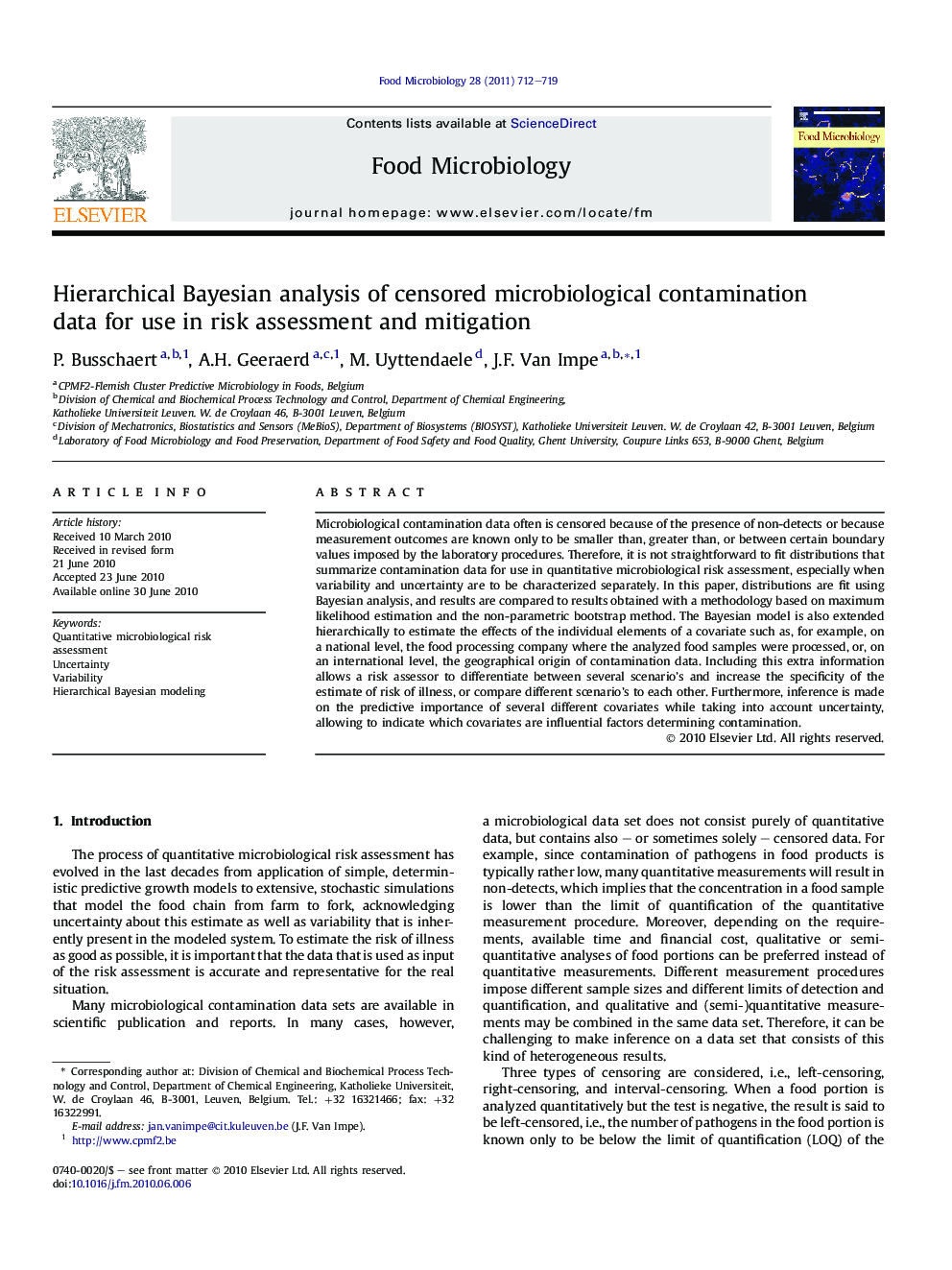| Article ID | Journal | Published Year | Pages | File Type |
|---|---|---|---|---|
| 4363103 | Food Microbiology | 2011 | 8 Pages |
Microbiological contamination data often is censored because of the presence of non-detects or because measurement outcomes are known only to be smaller than, greater than, or between certain boundary values imposed by the laboratory procedures. Therefore, it is not straightforward to fit distributions that summarize contamination data for use in quantitative microbiological risk assessment, especially when variability and uncertainty are to be characterized separately. In this paper, distributions are fit using Bayesian analysis, and results are compared to results obtained with a methodology based on maximum likelihood estimation and the non-parametric bootstrap method. The Bayesian model is also extended hierarchically to estimate the effects of the individual elements of a covariate such as, for example, on a national level, the food processing company where the analyzed food samples were processed, or, on an international level, the geographical origin of contamination data. Including this extra information allows a risk assessor to differentiate between several scenario’s and increase the specificity of the estimate of risk of illness, or compare different scenario’s to each other. Furthermore, inference is made on the predictive importance of several different covariates while taking into account uncertainty, allowing to indicate which covariates are influential factors determining contamination.
